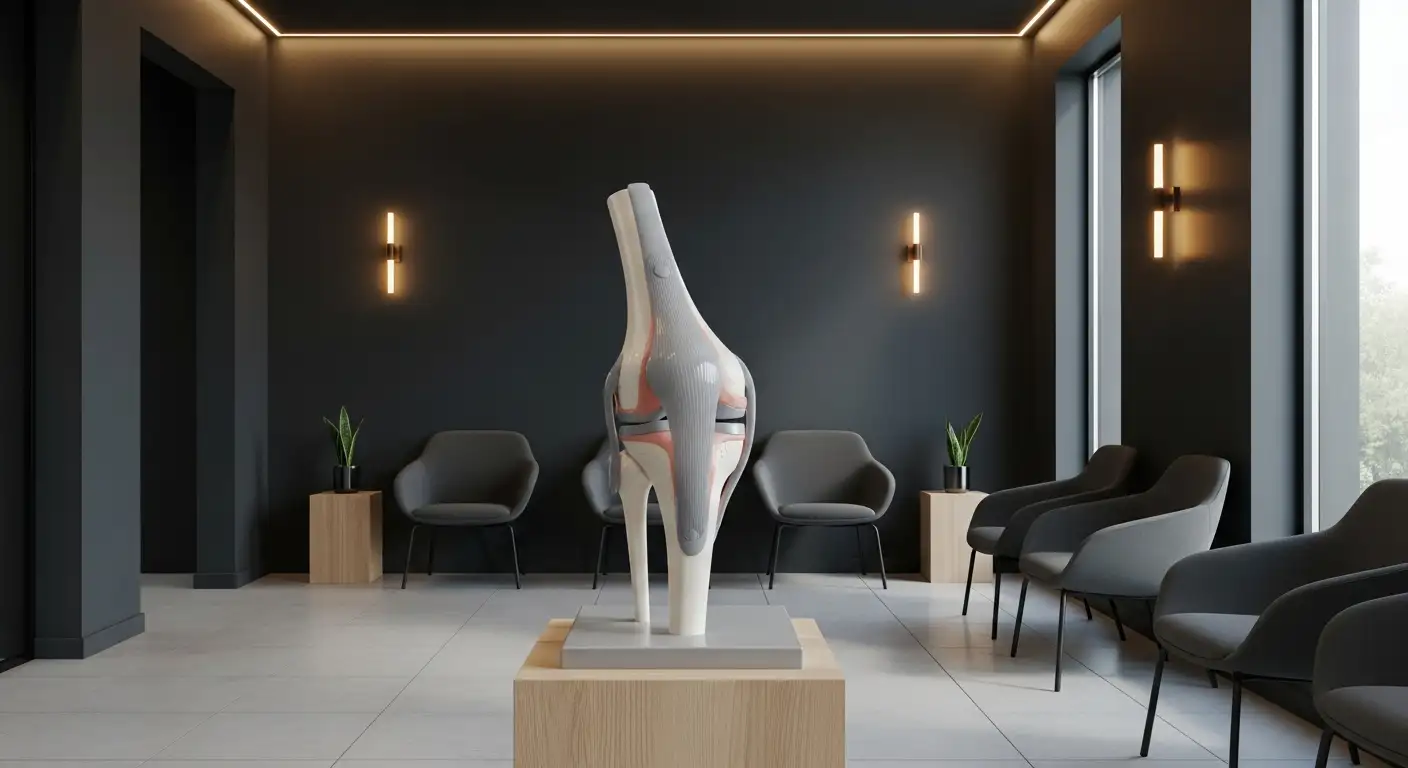Unveiling the Potential of PRP Therapy in Orthopedic Care
Platelet-Rich Plasma (PRP) therapy has emerged as a promising regenerative treatment for knee pain, especially in conditions like osteoarthritis and soft tissue injuries. This article explores the mechanisms, benefits, safety, and clinical applications of PRP, offering a comprehensive understanding of this innovative therapy.
What is PRP Therapy and How Does It Work for Knee Pain?
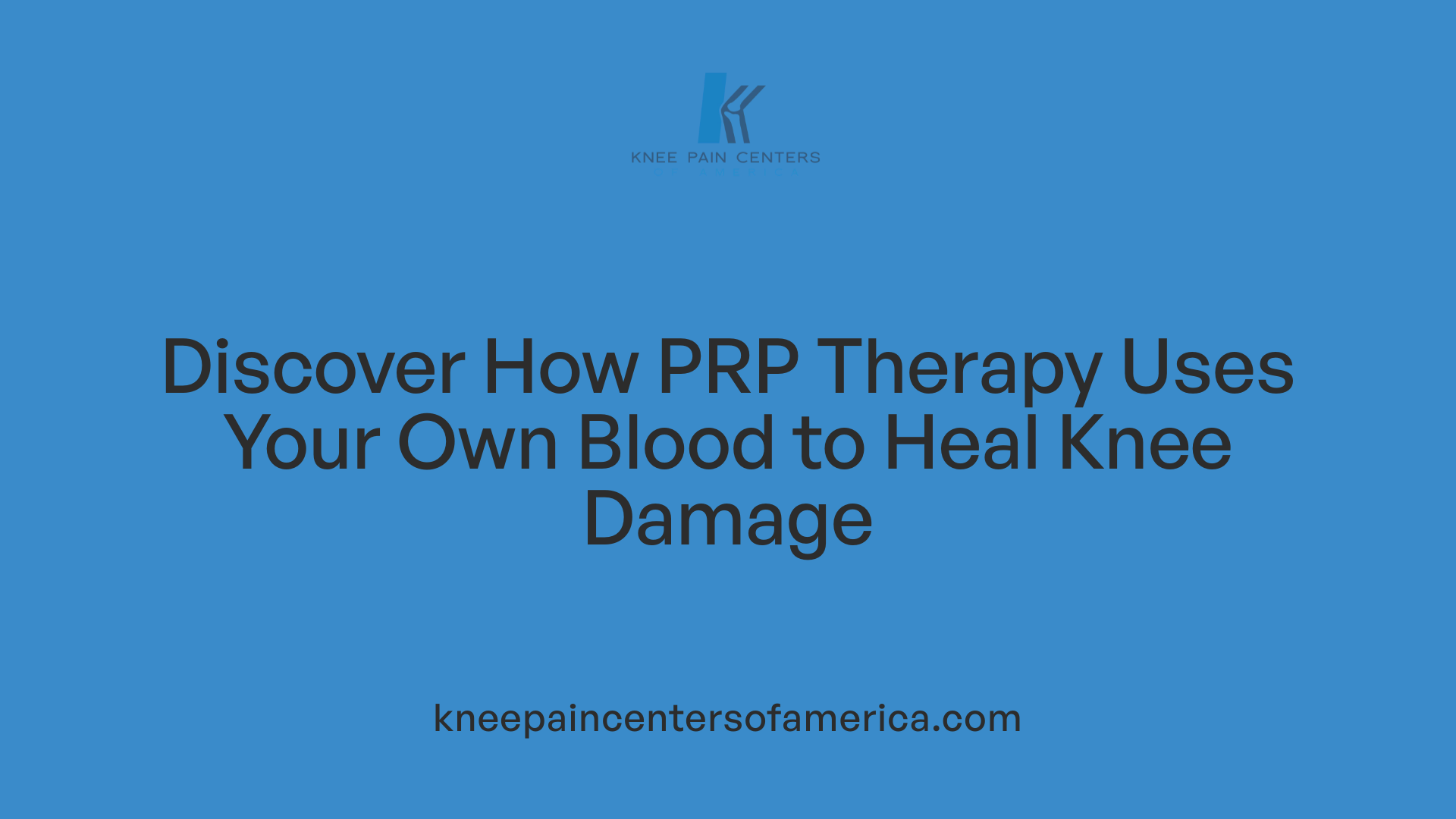
What is Platelet-Rich Plasma (PRP) therapy and how does it work for knee pain?
Platelet-Rich Plasma (PRP) therapy is a regenerative treatment that uses a person's own blood to help heal damaged tissues in the knee. The process begins with drawing a small blood sample from the patient. This blood is then spun in a centrifuge, which separates the different components. The goal is to concentrate the platelets, which are rich in growth factors and proteins critical for tissue repair.
The resulting platelet-rich plasma is then injected directly into the knee joint or affected tissues. Once inside, the growth factors released from the activated platelets stimulate healing by encouraging cellular growth, tissue regeneration, and reducing inflammation.
Many patients experience notable pain relief and improved joint function within weeks to months following the procedure. PRP helps accelerate the body's natural healing process, targeting damaged cartilage, tendons, and ligaments in the knee.
Because PRP is derived from the patient's own blood, it minimizes the risk of allergic reactions or rejection. However, like all medical procedures, there are some risks such as infection, bleeding, or discomfort at the injection site, but these are generally minimal.
While ongoing research continues to explore the exact mechanisms, the primary action of PRP involves leveraging growth factors to activate repair pathways. This process aims not only to relieve symptoms but also to promote long-term tissue healing, making it a promising option for those seeking to avoid surgery or extend the time before joint replacement.
Benefits and Expected Outcomes of PRP Therapy for Knee Pain
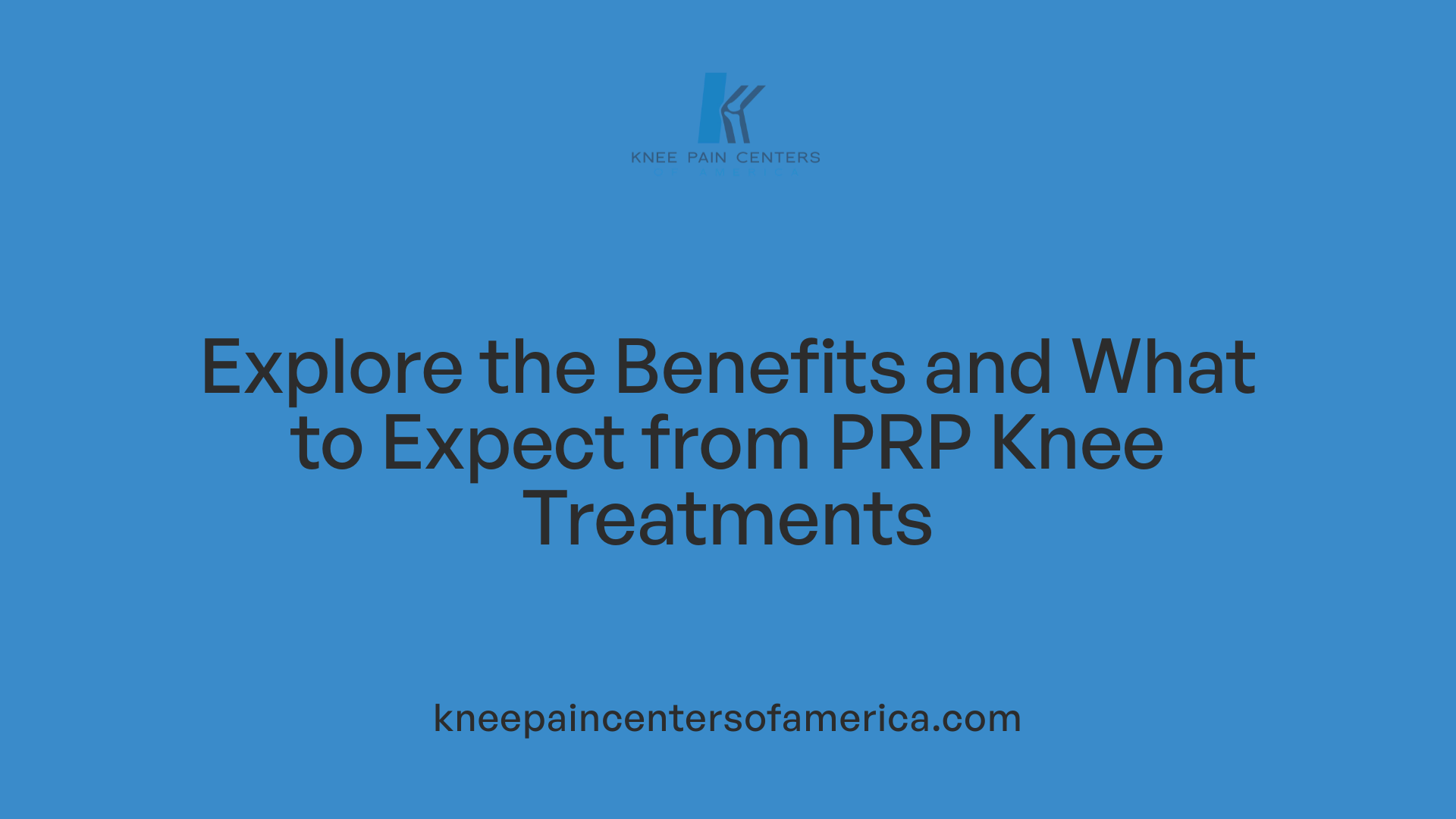 PRP therapy offers notable benefits for individuals suffering from knee pain, particularly due to osteoarthritis. Many patients report pain relief that can last between 6 to 12 months after the procedure. This regenerative treatment leverages the body’s own healing factors to reduce inflammation, promote tissue repair, and improve joint function.
PRP therapy offers notable benefits for individuals suffering from knee pain, particularly due to osteoarthritis. Many patients report pain relief that can last between 6 to 12 months after the procedure. This regenerative treatment leverages the body’s own healing factors to reduce inflammation, promote tissue repair, and improve joint function.
Research consistently shows that PRP injections outperform placebo saline and hyaluronic acid in terms of symptom relief. Compared to corticosteroids, PRP tends to produce longer-lasting benefits, with some studies indicating superior outcomes at the 3 to 6-month mark. Patients often experience a gradual reduction in pain, improved mobility, and increased quality of life following treatment.
The success rate of PRP in treating knee osteoarthritis is generally estimated at around 60% to 70%. Success, in this context, typically means at least a 50% improvement in pain and joint function. Factors influencing the effectiveness include disease severity, the concentration of platelets in the injected PRP, and proper patient selection.
Most side effects are mild, with temporary soreness and swelling being common post-injection. Due to its autologous nature, PRP has minimal risks of adverse reactions, making it a safe alternative for many patients.
Long-term benefits include not only sustained pain relief but also potential cartilage regeneration—though more research is needed to confirm regenerative effects. Overall, PRP stands out as a safe, effective, and minimally invasive option for improving knee pain and function over medium-term periods.
Number of Treatments and Treatment Protocols
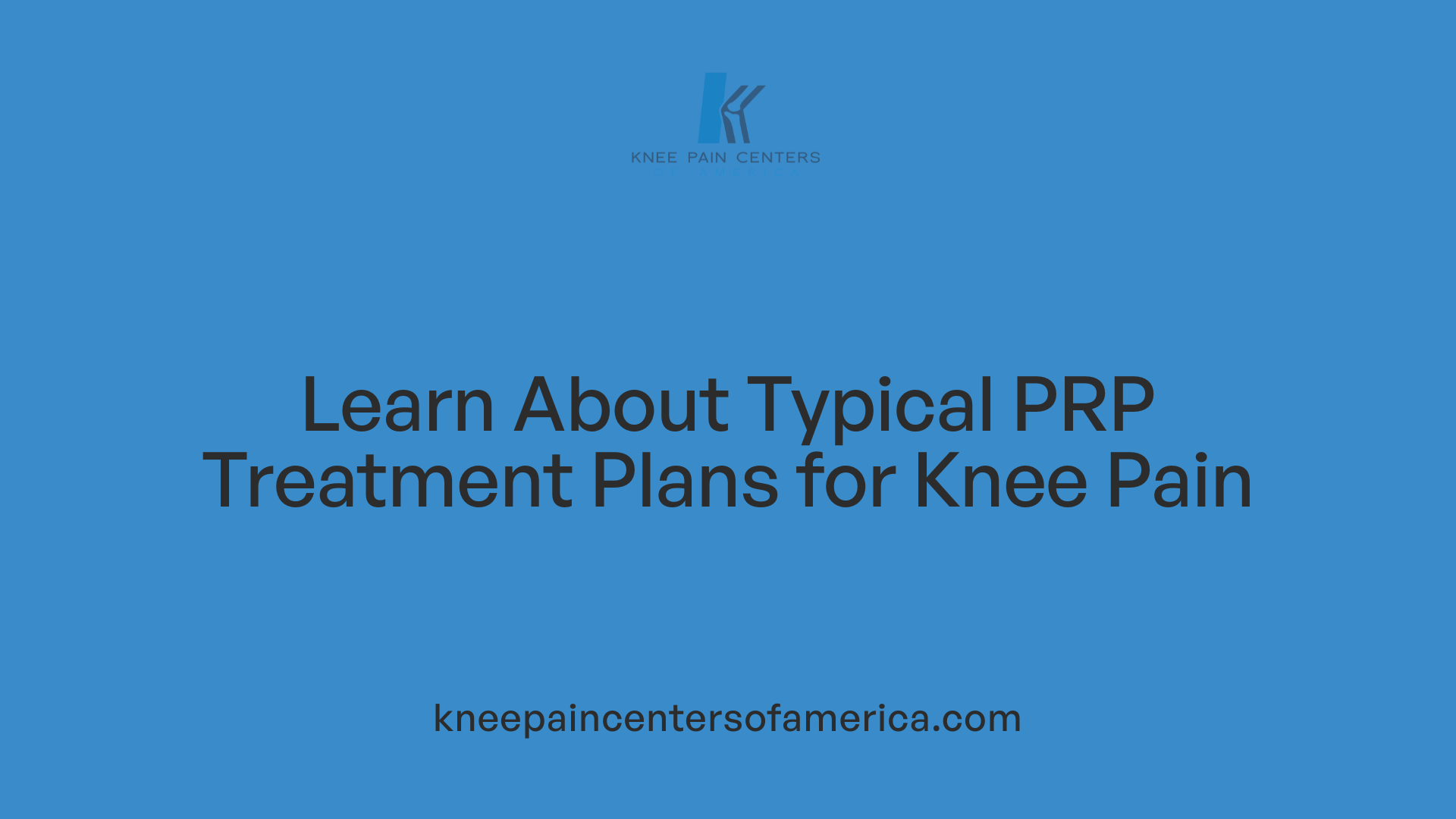
How many PRP treatments are typically needed for knee pain?
The number of PRP sessions required for knee pain varies depending on the severity of the condition and how well the patient responds to initial treatments. Most patients with mild to moderate osteoarthritis or soft tissue injuries often need between one and three injections.
These injections are usually spaced several weeks apart, commonly 4 to 6 weeks, to allow time for tissue healing and to assess the effectiveness of each treatment.
Each PRP procedure involves drawing a small amount of blood, processing it through centrifugation to concentrate the platelets and growth factors, and then injecting the plasma into the affected joint or tissue.
The entire procedure typically takes around 45 to 90 minutes, including preparation and healing time post-injection.
Healthcare providers evaluate the patient’s progress after each session. Some might experience significant relief after just one injection, while others may benefit more from additional treatments to achieve optimal results.
It is important to note that individual needs vary, and the treatment plan should be tailored to each patient's specific condition and response to therapy. Regular follow-up is essential to determine the necessity of further PRP sessions.
Safety, Risks, and Considerations in PRP Therapy
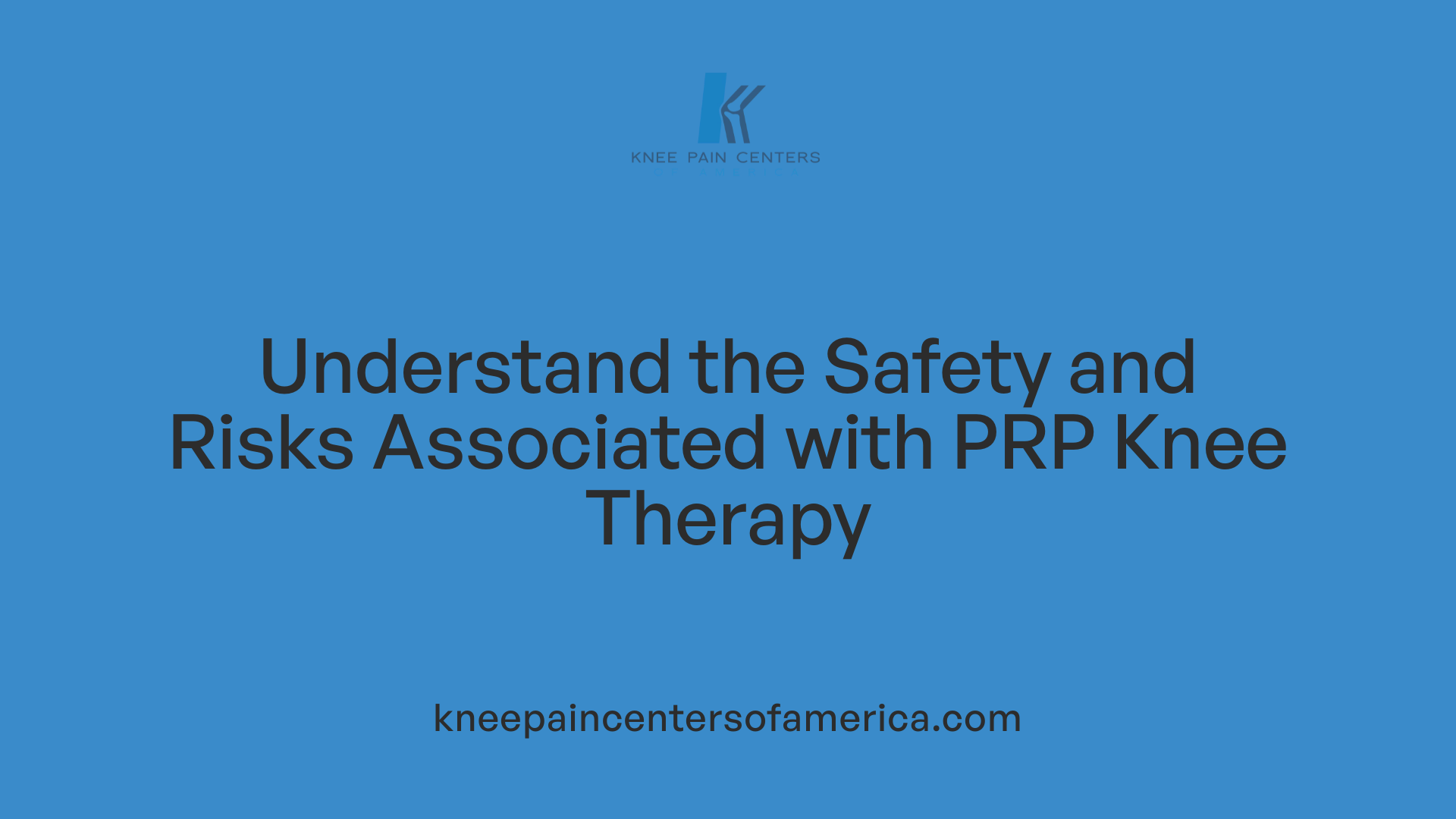
What are the safety considerations and potential side effects of PRP therapy for knees?
PRP (platelet-rich plasma) therapy is generally safe, largely because it is an autologous treatment—meaning it uses the patient’s own blood. This significantly minimizes the risk of allergic reactions and rejection. The most common side effects are mild and tend to resolve quickly. Patients may experience soreness, swelling, or redness at the injection site, which usually lasts only a few days.
Serious adverse events are very rare but can occur if sterile procedures are not properly followed. Potential risks include infection, bleeding, nerve injury, or injury to surrounding tissues. Proper technique and sterile conditions are essential to prevent these complications.
Some patients may notice temporary inflammation or joint stiffness after the injection. These reactions are part of the natural healing process stimulated by growth factors in the PRP. In rare cases, prolonged pain or persistent swelling can happen, necessitating medical attention.
Before undergoing PRP, patients should be screened for contraindications. These include active infections, blood disorders, or certain health conditions like sepsis or anemia. It is important for patients to disclose their full medical history to their healthcare provider.
Post-injection care involves rest, ice application, and avoiding strenuous activity for a few days. Following these guidelines helps reduce the risk of complications and supports optimal healing.
Overall, PRP therapy has a favorable safety profile with minimal risks, making it a popular choice among regenerative treatments for knee issues.
Clinical Evidence, Effectiveness, and Research Findings
Numerous studies underscore the potential benefits of platelet-rich plasma (PRP) therapy in managing knee osteoarthritis and other musculoskeletal conditions. For example, multiple research efforts and meta-analyses, including a 2021 review published in the journal CARTILAGE, show that PRP injections generally result in improved knee function and pain reduction compared to placebo treatments. These benefits tend to last between 6 to 12 months, with many patients experiencing notable relief within the first few weeks.
When comparing PRP with other therapies, evidence suggests that PRP tends to outperform hyaluronic acid injections, which are commonly used for similar conditions. Studies demonstrate higher response rates and better long-term outcomes with PRP, especially when multiple injections are administered as part of the treatment protocol. Meta-analyses indicate that PRP’s efficacy can surpass corticosteroids, offering symptom relief without the adverse effects associated with steroid use.
Regarding long-term benefits, MRI studies and clinical follow-ups have demonstrated that PRP may facilitate cartilage regeneration and slow disease progression in knee osteoarthritis. Some reports claim that up to 85.7% of patients did not require knee replacement surgery within five years post-PRP treatment, highlighting its potential to delay more invasive interventions.
The overall success rate for PRP therapy in knee osteoarthritis is approximately 60% to 70%. This means that about two-thirds of patients experience at least a 50% reduction in pain and improved joint function for 6 to 12 months, making PRP a promising minimally invasive option. However, outcomes can vary depending on factors such as disease severity, preparation techniques, and patient health. Patients with early to moderate osteoarthritis typically see the best results. Despite variations, PRP’s reputation as a safe and resource-efficient treatment continues to grow among clinicians and patients alike.
PRP Preparation and Administration Protocols
What are the protocols and procedures involved in PRP therapy for knees?
PRP therapy for knees begins with collecting a small volume of blood from the patient, typically around 36 mL. This blood is then processed through centrifugation at a speed of approximately 2100 rpm for about 8 minutes. The centrifuge separates the blood into layers, concentrating the platelets in a plasma portion and effectively removing red and white blood cells. This process results in a platelet-rich plasma (PRP) that contains a high level of growth factors and proteins essential for tissue healing.
Once prepared, the PRP is carefully aspirated using sterile techniques. The injection procedure is performed in a clinical setting, often with ultrasound guidance to ensure precise placement into the affected knee joint. Typically, the injection involves a 21-gauge needle inserted into the suprapatellar pouch, and it is usually done without local anesthesia to minimize discomfort.
Regarding the treatment schedule, most protocols recommend a series of three injections, each spaced about one week apart. This series allows for incremental stimulation of the healing process. Post-injection, patients are advised to follow activity restrictions to optimize the treatment outcomes. These may include avoiding non-steroidal anti-inflammatory drugs (NSAIDs) for over four weeks, limiting strenuous or weight-bearing exercises, and resting the joint as needed.
Monitoring focuses on assessing improvements in pain, mobility, and function over subsequent months. Patients often experience some mild side effects such as soreness and swelling, which typically resolve without intervention. The entire process emphasizes sterile technique, proper timing, and patient-specific considerations to maximize the regenerative benefits of PRP therapy.
PRP as a Transformative Approach in Knee Pain Management
While PRP therapy represents a promising regenerative intervention for knee pain, particularly in osteoarthritis and soft tissue injuries, ongoing research aims to standardize protocols and optimize outcomes. Its minimally invasive nature, coupled with a favorable safety profile and evidence of efficacy, makes PRP an attractive option for patients seeking alternatives to surgery or long-term medication. Consulting with qualified healthcare providers can help tailor treatment plans to individual needs, potentially delaying or reducing the need for joint replacement and improving quality of life.
References
- Platelet-Rich Plasma (PRP) Injection: How It Works - HSS
- Platelet-Rich Plasma (PRP) Injections - Johns Hopkins Medicine
- Analyzing the performance of platelet-rich plasma and bone marrow ...
- Platelet-Rich Plasma for Osteoarthritis in 2024 – More Hype
- Platelet-Rich Plasma (PRP Injection) - Cleveland Clinic
- How Effective Are PRP Injections for Knee Pain Relief? | Maryland
- PRP Therapy - Greater Atlanta Pain & Spine
- Treating Bad Knees & Knee Pain with Platelet Rich Plasma

